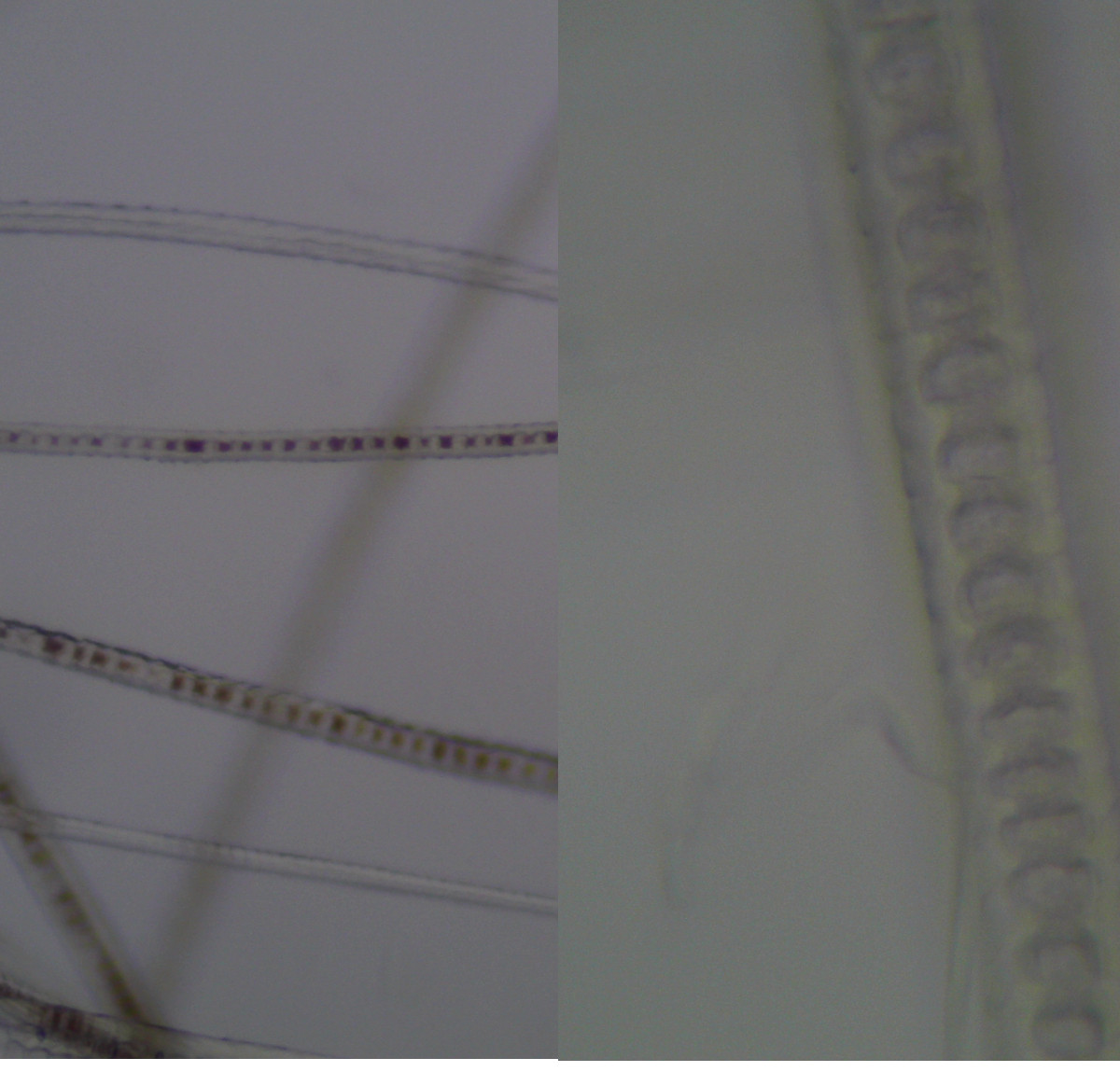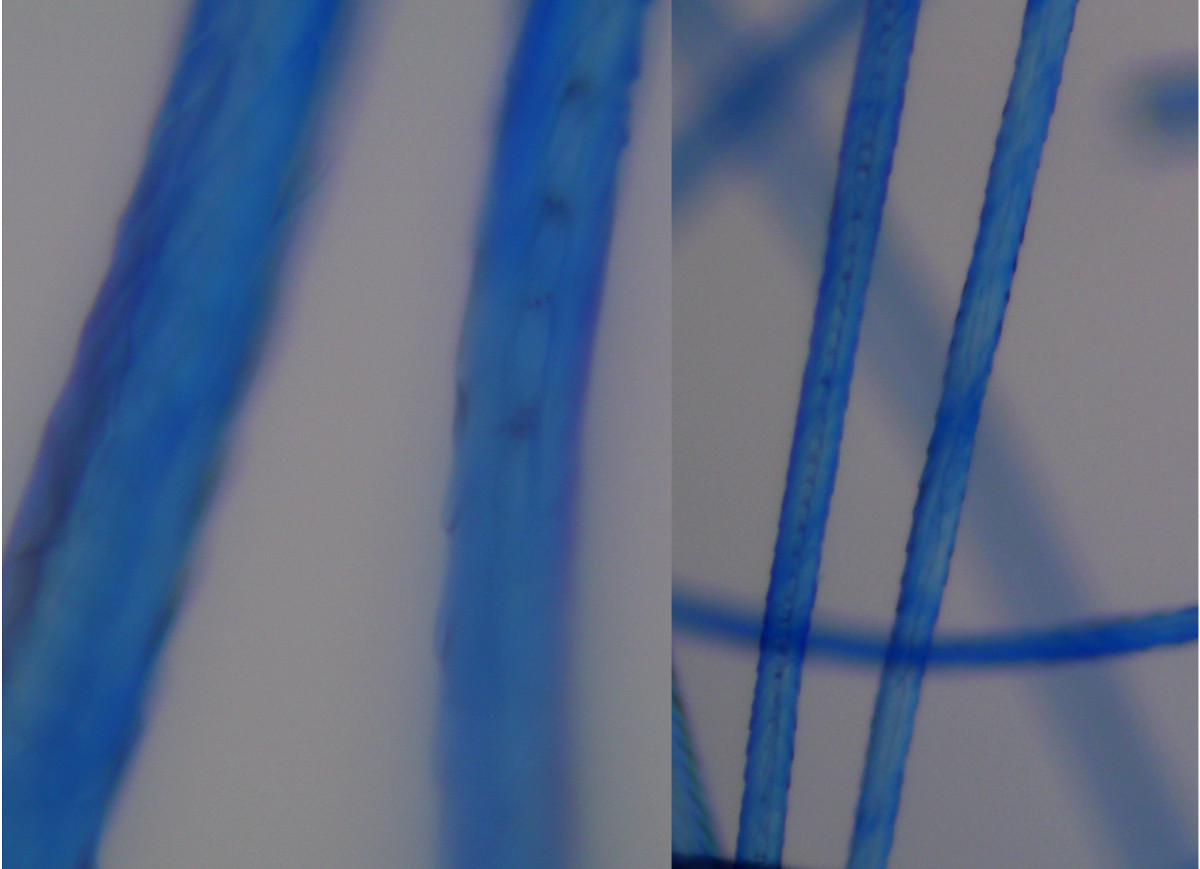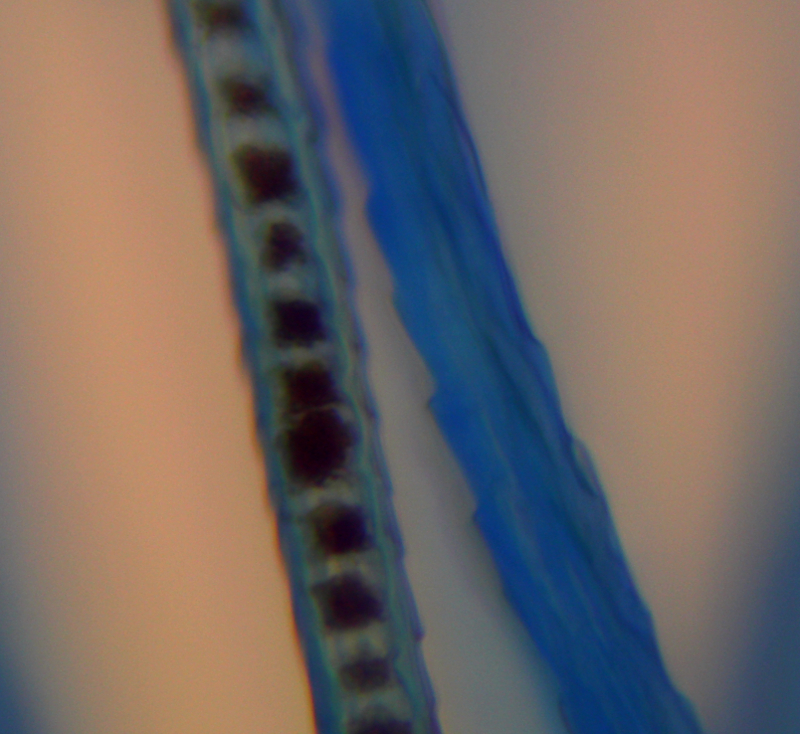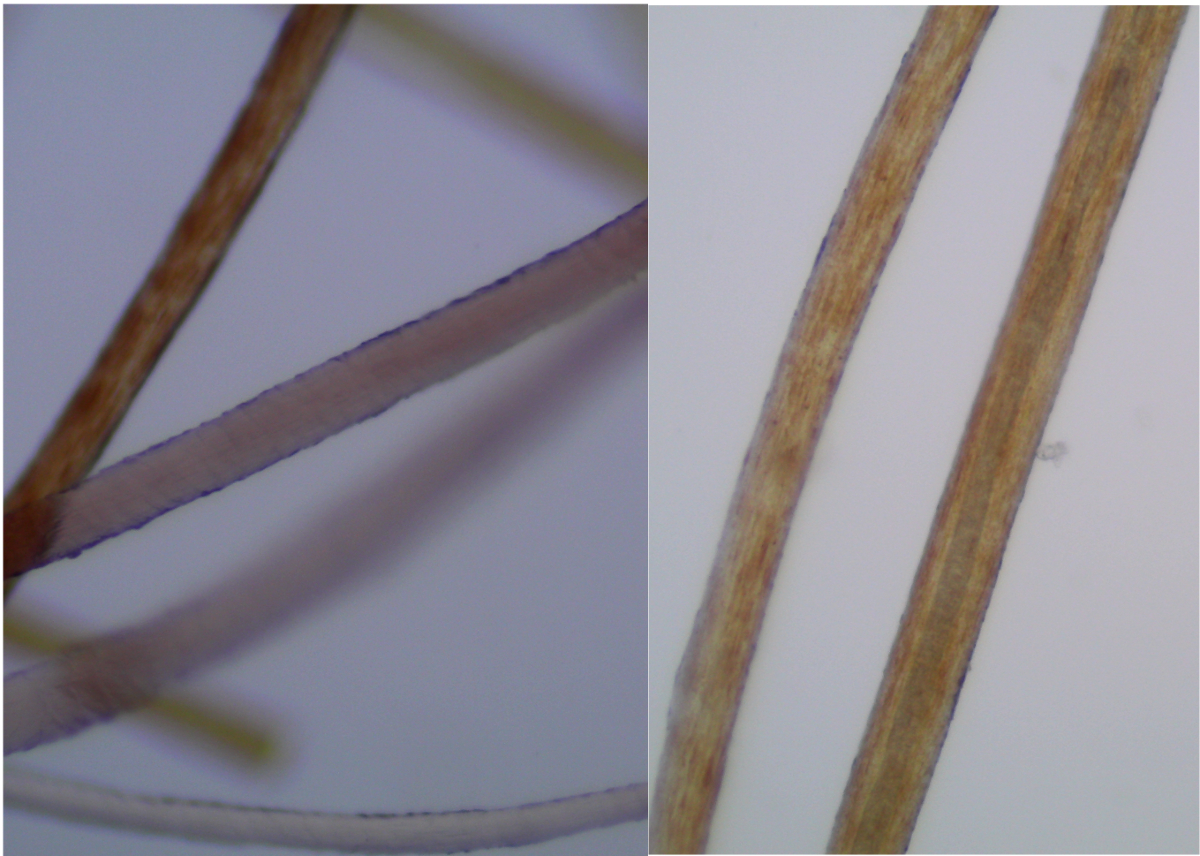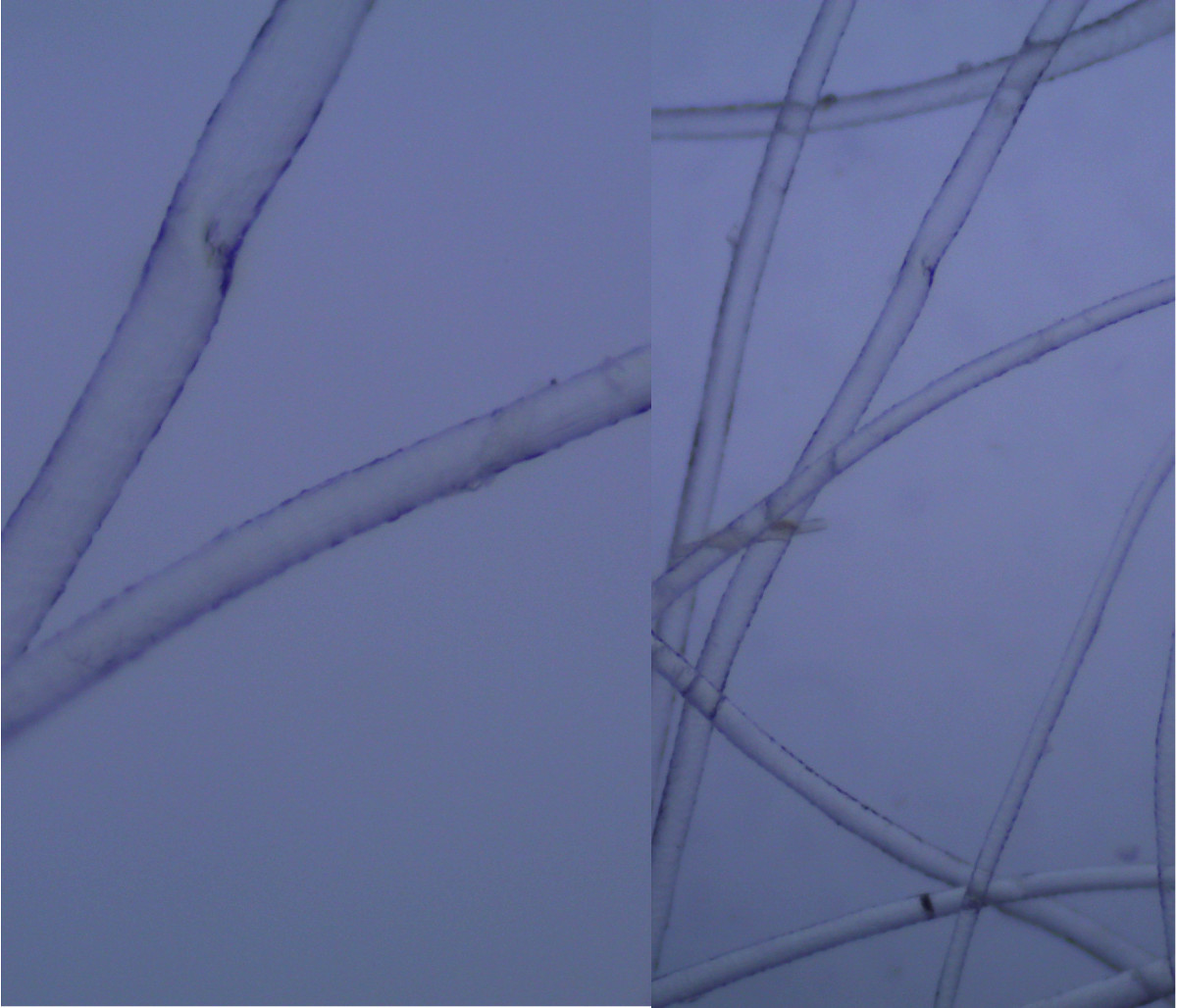Hey, guys!! I finally got the calibration slide for my microscope. I've been waiting for months... so now I can have my microscope measure things for me - including rabbit fluff. Voila!

I did a quick test run and measured a random sampling of wool fibres from my French Angora doe, Dust Devil. It's not exactly "scientific" yet - I chose a random sample and measured all of four fibres. However, I'm still pretty excited about what this will let me do in the future, once I hammer out my measurement methods.
But I was pretty meticulous about measuring things like growth rate, weights and feed intake with my meat buns. I feel like this will give me the tools I need tocrush those who oppose me make excellent breeder selection and showing decisions with my French Angora.
Fun, right?
... Okay, maybe this is actually only fun for me, the uber-nerd. :lol:

I did a quick test run and measured a random sampling of wool fibres from my French Angora doe, Dust Devil. It's not exactly "scientific" yet - I chose a random sample and measured all of four fibres. However, I'm still pretty excited about what this will let me do in the future, once I hammer out my measurement methods.
But I was pretty meticulous about measuring things like growth rate, weights and feed intake with my meat buns. I feel like this will give me the tools I need to
Fun, right?
... Okay, maybe this is actually only fun for me, the uber-nerd. :lol:




